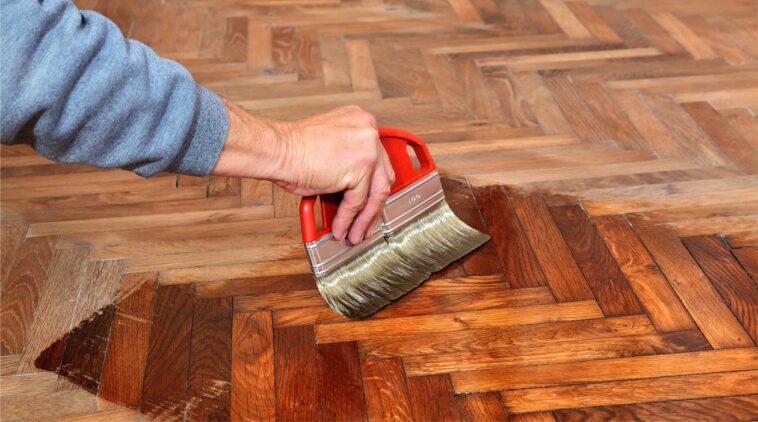Wood floors add warmth and elegance to any home. Over time, however, they may become worn, scratched, or faded, requiring restoration to bring back their original beauty. Restoring your wood floors can be a rewarding project that revitalizes your living space. In this article, we will provide you with a step-by-step guide on how to restore your wood floors in 2023, ensuring they look stunning and stand the test of time.
Explore the Contents
Restore Your Wood Floors
Read More: The Importance of Texture in Interior Design in 2023
Understanding Floor Restoration
Wood floor restoration involves the process of bringing back the natural beauty of your wood floors. It typically includes sanding, repairing, staining, and applying protective coatings to ensure durability and longevity. By following the right techniques and using the appropriate products, you can achieve remarkable results and transform your wood floors.
Assessing the Condition of Your Floors
Before you begin the restoration process, it’s important to assess the condition of your wood floors. Look for signs of wear, scratches, stains, or discoloration. Determine if there are any damaged or rotten boards that need to be replaced. Assessing the condition will help you plan the necessary steps and materials required for the restoration.
Gathering the Necessary Tools and Materials
To restore your floors effectively, you’ll need to gather the following tools and materials:
- Sanding machine or sandpaper
- Vacuum cleaner or broom
- Wood filler
- Putty knife
- Stain or finish
- Brushes or applicators
- Protective coatings
- Cleaning solutions
- Microfiber mop or cloth
- Safety goggles and gloves
Having these tools and materials ready will make the restoration process smoother and more efficient.
Preparing the Room for Restoration
Before you begin the wood floor restoration process, it’s essential to prepare the room properly. Clear the area by removing all furniture, rugs, and obstacles. Cover vents and openings to prevent dust from spreading. Seal off adjacent rooms with plastic sheets if needed. Open windows and doors for ventilation. Protect electrical outlets and switches with masking tape. Consider using drop cloths or plastic sheets to safeguard walls and baseboards.
Removing Carpet or Existing Floor Coverings
Removing carpet or existing floor coverings is a crucial step in the wood floor restoration process. To remove the carpet, clear the room of furniture and items, and then start from a corner by firmly gripping the edge with pliers and slowly pulling it away, detaching it from the tack strips or adhesive. Continue pulling until the carpet is completely removed, and also remove any underlying padding. Inspect the subfloor for any residue or adhesive and clean it thoroughly.
Sanding the Wood Floors
Sanding is a crucial step in the restoration process as it smooths the surface and removes imperfections. Start with a coarse-grit sandpaper or a sanding machine, and gradually work your way to finer grits for a polished finish. Remember to sand in the direction of the wood grain to avoid damaging the floor. After sanding, vacuum or sweep the area to remove any dust or debris.
Repairing Damaged Areas
Inspect the wood floors for any damaged areas such as scratches, dents, or gaps between boards. Use a wood filler to repair these imperfections. Apply the filler with a putty knife, following the manufacturer’s instructions. Once the filler is dry, sand it lightly to ensure a smooth and even surface.
Applying Stain or Finish
Applying stain or finish to your wood floors enhances their appearance and protects them from wear and tear. Choose a stain color that complements your interior design and apply it evenly using a brush or applicator. Allow the stain to dry according to the product’s instructions. Once dry, apply multiple coats of finish, ensuring each coat is fully dry before applying the next.
Applying Protective Coatings
To ensure the longevity of your restored floors, apply protective coatings. Polyurethane is a popular choice as it provides a durable and water-resistant finish. Use a brush or roller to apply the protective coatings, following the manufacturer’s instructions. Apply multiple coats for optimal protection, allowing each coat to dry thoroughly.
Cleaning and Maintenance Tips
After restoring your wood floors, it’s important to maintain their beauty and prolong their lifespan. Here are some cleaning and maintenance tips:
- Regularly sweep or vacuum your wood floors to remove dirt and debris.
- Use a microfiber mop or cloth dampened with a wood floor cleaner for routine cleaning.
- Wipe up spills immediately to prevent staining and damage.
- Avoid using harsh cleaning agents or excessive water, as they can harm the wood.
- They place felt pads under furniture legs to prevent scratches and dents.
Read More: 9 Best Tips for Creating a Relaxing Outdoor Lounge
Conclusion
Restoring your wood floors is a rewarding endeavor that breathes new life into your home. By following the step-by-step guide outlined in this article, you can transform worn-out wood floors into stunning features that enhance your living space. Remember to assess the condition of your floors, gather the necessary tools and materials, and follow each restoration step diligently. With proper care and maintenance, your restored floors will radiate beauty for years to come.
FAQs
How long does it take to restore wood floors?
The time it takes to restore wood floors depends on various factors such as the size of the area, the condition of the floors, and the drying time between coats. On average, it may take a few days to complete the restoration process.
Can I restore severely damaged wood floors?
Severe damage may require professional assistance or even the replacement of certain boards. Assess the extent of the damage and consult a flooring specialist if needed.
Is it necessary to sand the entire floor?
Sanding the entire floor ensures a uniform surface and removes any unevenness. However, if there are only minor imperfections, spot sanding may be sufficient.
How often should I refinish my wood floors?
The frequency of refinishing depends on the wear and tear your floors endure. On average, wood floors may require refinishing every 7-10 years.
Can I change the color of my wood floors during restoration?
Yes, applying stain allows you to change the color of your wood floors. Choose a stain color that matches your desired aesthetic.



